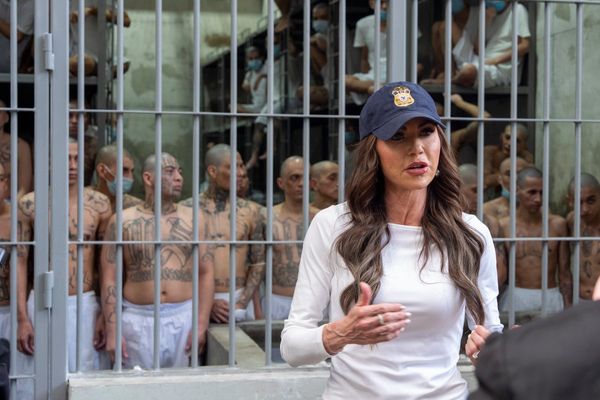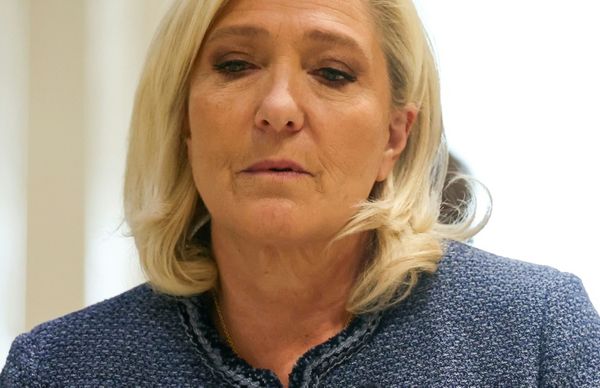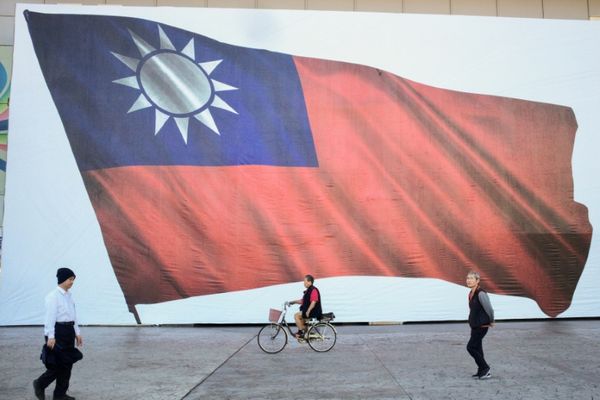
At 3:25 p.m. on July 22, a ray of sun should have illuminated the first of 77 bronze columns on a slice of land opposite Utoya island outside Norway's capital. Over the next three hours and eight minutes, it would have brushed each column in turn, commemorating every person killed by far-right extremist Anders Breivik
But on the 10th anniversary of the attack, the memorial remains a construction site. And a monument, deftly designed to capture in sunlight the exact duration of the attack — from a bomb explosion in Oslo to Breivik’s eventual arrest on Utoya — won't be ready.
A mix of mutating plans, delays, and court interventions, has pit bereaved parents and survivors against local residents who say they are still traumatized after seeing and hearing the slaughter on Utoya from their sleepy rural village less than a mile away across the water.
For some local residents, the delay is a temporary reprieve from the arrival of visitors they fear will forever upend their community. For parents of the dead and survivors, it is an unforgivable failure.
“It is a beautiful memorial, which has so many different elements that pay tribute to the victims, on a beautiful site down by the water in view of the island. It should have been ready for July 22," said Lisbeth Kristin Roeyneland, whose daughter Synne was murdered in the attack, and who now heads a support group for survivors and bereaved families.
“We are very disappointed,” she said. "A lot of the families and survivors are angry.”
Breivik killed eight in the Oslo bomb attack before going to Utoya dressed as a police officer and shooting dead 69 mostly teen members of the Labor Party Youth wing who were camping there.
Scores more were injured, and many were hoping to join families of their former friends to commemorate this year's anniversary.
“It is very disappointing that so many survivors and families don’t have that place to go. They still don’t have a national monument to the sufferings for that day,” said Sindre Lysoe, a survivor of the attacks who is now general secretary of the Labor Party Youth wing.
Bjoern Magnus Ihler, another survivor, says the “bafflingly long” delays have caused “unnecessary pain” for victims’ families, and compares the process unfavorably with the 9/11 memorial site in New York which was inaugurated on the 10th anniversary of that attack, and open to the public the next day.
Some memorials do exist. The victims came from all over Norway, and scattered monuments in village parks and public areas are a reminder of how widely the tragedy affected the small country of 5.3 million people.
In Oslo, 1,000 iron roses outside the capital's cathedral, replicating the sea of flowers laid by shocked Norwegians in the days after the tragedy, was opened in 2019. On Utoya island, a suspended, metal ring features the name of each victim, and the cafe has been transformed into a learning center. It is surrounded by 495 wooden posts representing the survivors, and 69 inner posts memorializing the victims.
But the public site near the island, promised shortly after the tragedy, remains on the drawing board. Critics blame the government for underestimating the scale of the work.
“I think it’s shameful that Norway, 10 years after the terrorist attack, doesn’t have an official memorial site near Utoya,” said Tonje Brenna, the former deputy leader of the Youth wing, and today Labor leader of Viken, the county where Utoya and Oslo stand.
“It stands in grave contrast to the fact that the Norwegian Labor Youth have created their own beautiful, respectful and award winning memorial site on the island,” Brenna said. “The youth have been able to do the task the Norwegian government has been unable to do.”
An early plan supported by the families called “Memory Wound” was scrapped in 2017. Designed by Swedish artist Jonas Dahlberg to be visible from Utoya, the plan was to gouge into the mountainside opposite the island. But local residents — many of whom witnessed the slaughter from their homes less than a mile away — threatened a court case to have it stopped.
Families hoped the new plan for the 77 bronze statues, designed by Norwegian architects, Manthey Kula, would settle the dispute.
Work began at the end of 2020 on land donated by the Labor Party Youth wing next to the harbor.
But 16 local residents of this small village community say they remain traumatized by the attacks and fear the memorial and the new road taking visitors to the site will upend their quiet rural lives, forcing them to relive their memories every day. They sued the Labor Party Youth wing and the government in May temporarily halting construction.
“The families here were looking out on what was happening 10 years ago," said Anne Gry Ruud, a local resident involved in the case. "We have hard memories of the time.
“We could see people being shot,” she said. "My neighbors sailed out. They took their boats and rescued some of the children. They also object.”
The case was rejected, but the government decided the window was too small to prepare the site in time for the anniversary.
Hege Njaa Aschim, communications director for Norwegian government property development arm Statsbygg, said she was sorry the memorial wouldn't be ready, following the legal challenge, coronavirus quarantine measures and planning issues.
“Without these factors we could have made it ready," she said.
As they prepare to commemorate the worst day of their lives, survivors and victims have set aside anger over the delay. Roeyneland is philosophical.
“What can we do?” she asks. “We can’t open a memorial on a building site.”







